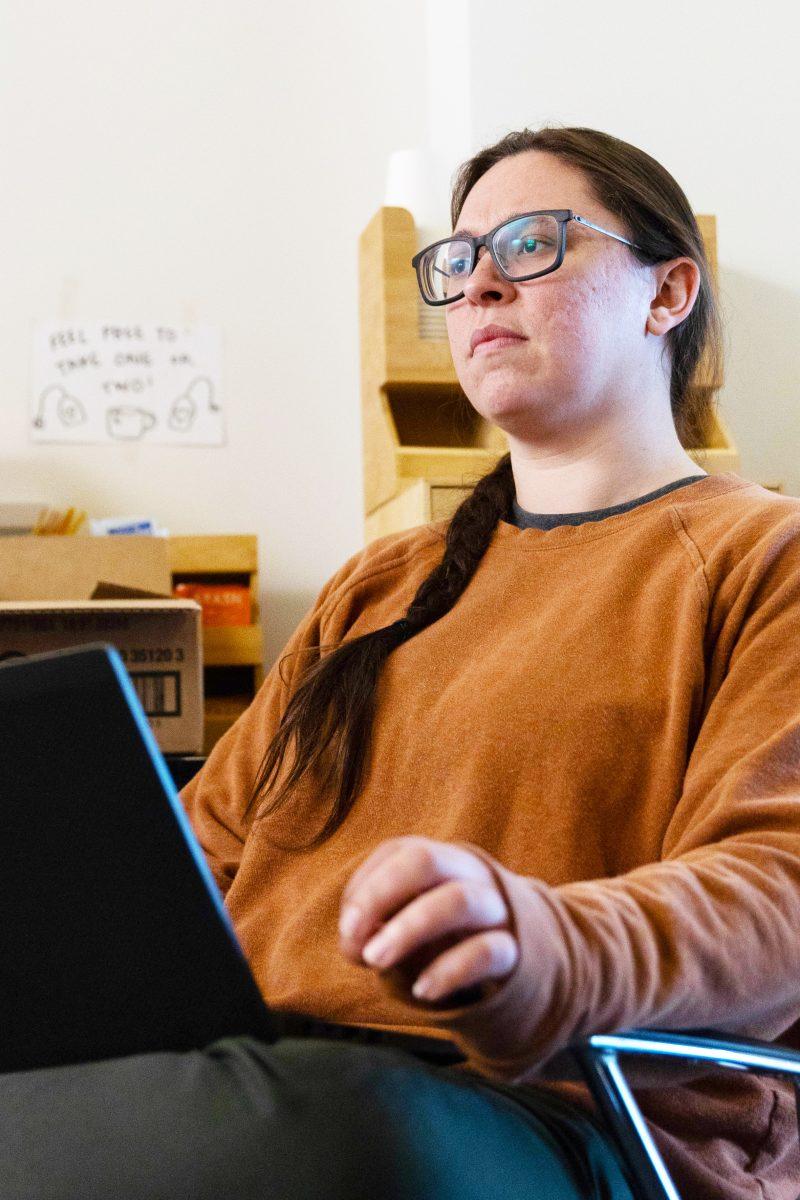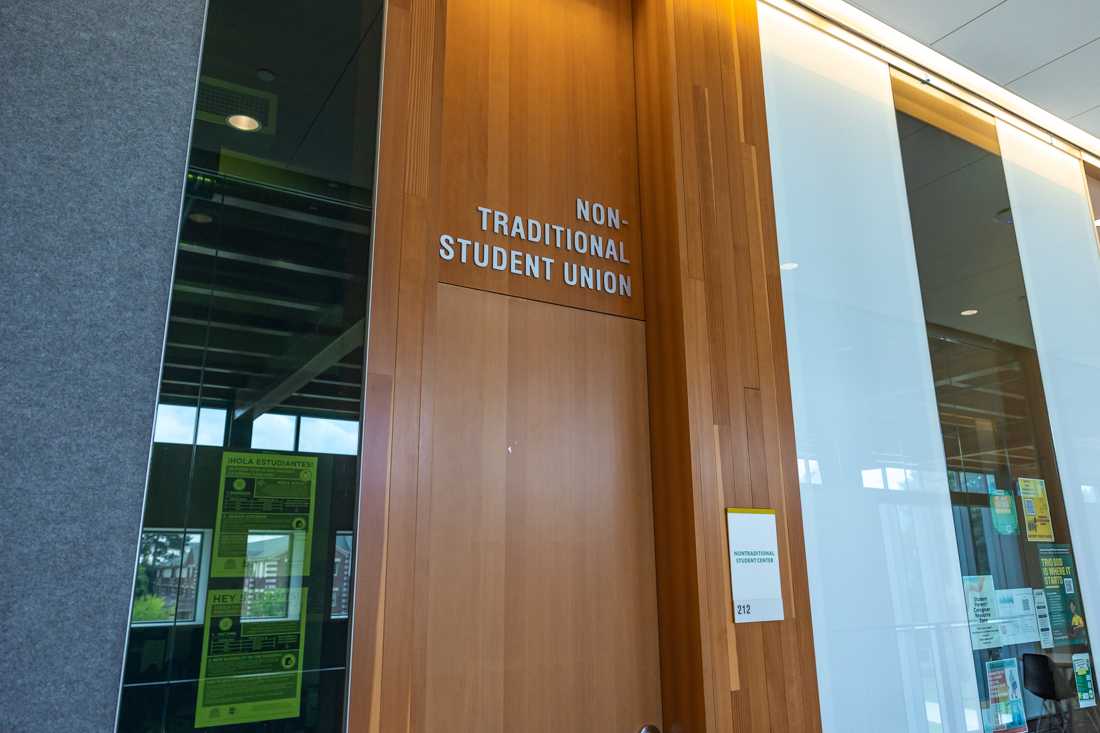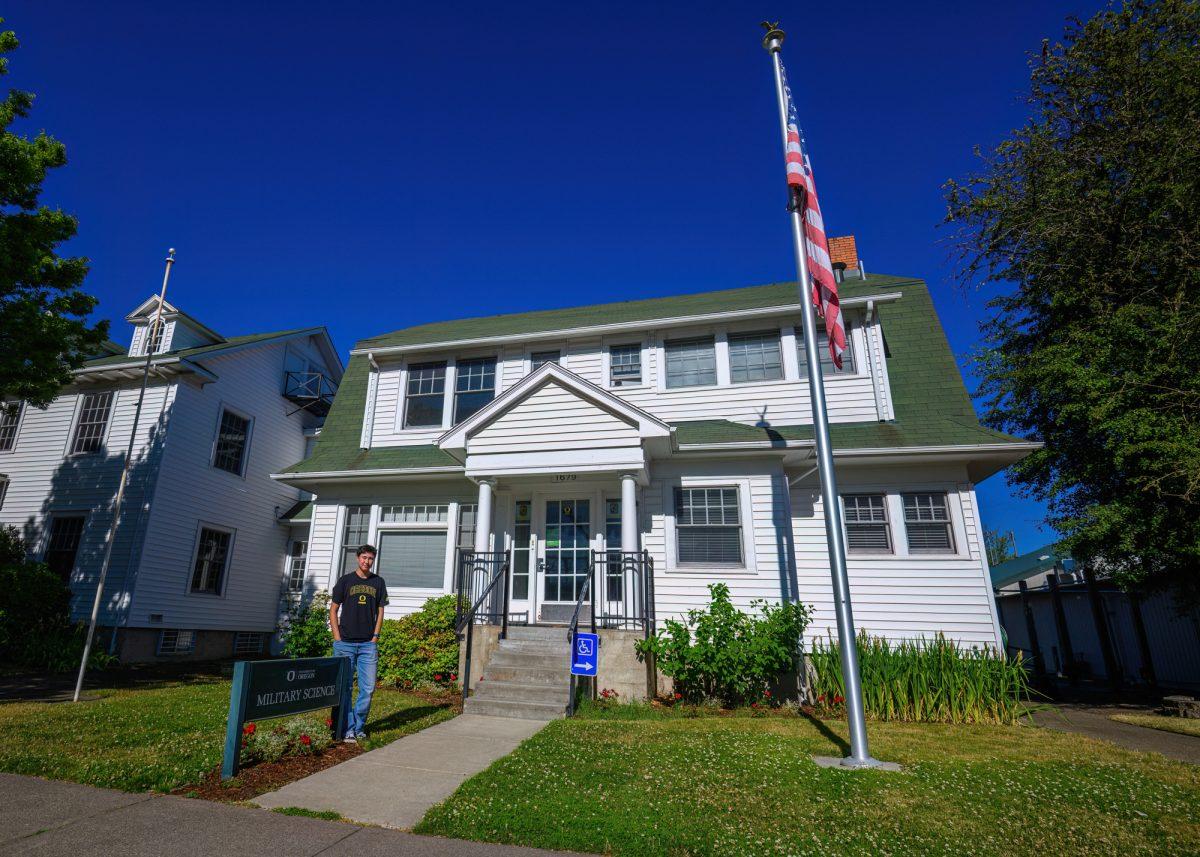“Nontraditional” is an umbrella term used to describe students who haven’t taken the common path to college. According to the University of Oregon’s Nontraditional Student Union website, this includes being over the age of 24, married, first generation, a transfer student and even self identifying as nontraditional. Due to the wide variety of nontraditional experiences, each person faces a unique set of challenges; some must balance raising a family, while others may feel too old to fit in with the student body.
Feeling older
Christine Anderson sees UO as a “highly traditional school,” with many students attending directly after high school. According to the University of Oregon website, the median age for undergraduate students is 20.4, with the median age of freshmen being 18.8. Anderson said that being in her 30s, this can be an isolating experience.
Anderson is a first generation college student, which she said left her with “no context for higher education.” Additionally, coming from a low-income community in California, many of her peers did not attend university. Anderson said there are certain expectations in higher education about the knowledge students come in with that she did not have. These skills included how to ask the right questions, schedule and attend office hours and read academic papers.
“I can feel the assumptions being made about me just passively,” she said.
Anderson began attending UO in 2021. With classes online and the majority of students being in their early 20s, Anderson lacked the feeling of belonging and community she had always expected from university.
“There’s all this talk on campus about how you belong,” Anderson said. “And it’s like, I don’t feel like I belong.”
This feeling of isolation and frustration led her to searching the internet for communities her age. At the time, she did not know the term nontraditional existed and instead typed “University of Oregon I’m old I don’t know what to do” into the search bar. This led her to the Nontraditional Student Union, an organization aimed at helping nontraditional students meet their unique needs.
The Nontraditional Student Union, located on the second floor of the EMU, hosts weekly produce drops, caregiving office hours and socialization events. Anderson’s favorite part about going into the office is seeing people who look like her and may better understand her experience.
Culturally different
Students at UO come from a variety of cultures and backgrounds. There are students from 93 different countries, and ethnic minorities make up 32.1% of the student body, according to the UO website.
Iana Ivanshina moved with her family from Russia to Oregon six years ago. Going to high school in Woodburn, she felt like there were unspoken cultural expectations that she wasn’t aware of. Ivanshina said that “in the US people are often expected to be independent and self-sufficient,” which differs from her experience in Russia.
Ivasnhina decided to attend Chemeketa Community College in Salem right after high school. She said she was nervous about attending a four year university because in Russia there is a lot of stigma associated with taking out loans. At Chemeketa, she felt that she lacked the support and community she had hoped to have. Due to some personal challenges, Ivanshina decided it would be best to leave community college and take a break from higher education.
Ivanshina’s sister began attending the UO last year and inspired Ivanshina to go back to school. She helped make UO feel like home to Ivanshina, and showed her loans aren’t so scary. This is Ivanshina’s first term at UO, but she already feels a strong sense of support and community.
While many students at UO take a traditional path, attending university straight from high school is not for everyone. Ivasnhina is proud of the nontraditional path she took and the growth she’s accomplished.
“I encourage everyone just to feel what’s better for them,” Ivanshina said. “And just go for it.”
Raising a family
Balancing school, sleep and social connections can be a challenge for many students. For journalism student John Adair, a father of triplets, there is an extra layer of difficulty.
Adair’s path to Oregon was far from linear. After high school, Adair attended and dropped out from the University of Kansas and Johnson County Community College in Kansas. After a six-year break from higher education he attended ITT Technical Institute, a private for-profit institute, and received an associate degree in graphic design. However, several years later the organization settled felony charges and his degree was deemed invalid by many recruiters. For several years Adair pursued a variety of random gigs until he decided to attend Lane Community College in 2019.
Adair decided to go back to school because he wanted to see “what [he] was truly capable of.” Adair said he transferred from Lane Community College to UO with a 4.0 GPA. Today, he said he isn’t chasing that 4.0, but he is putting his all into his education while also raising three babies with his fiancee.
Having to raise and provide for a family has put several barriers in his way. Luckily, he has a big support system including his family and the state. However, his sleep has still taken a major hit. With three babies also comes three sleep schedules. The common advice of “Sleep when the baby sleeps” hasn’t worked too well for him.
Free time is not something Adair has had for quite some time now. His “free time” is often spent catching up on his homework rather than playing video games or going to the movies.
Adair said most students are surprised when he tells them he has triplets. He noted they usually focus on his ability to stay calm in the midst of raising a family and going to school at the same time.
While nontraditional students only make a small percentage of the UO population, Anderson, Ivanshina and Adair help highlight the importance of accommodative and supportive systems in higher education.
Leaders of the Non-Traditional Student Union meet inside their office on the second floor of the EMU. The Non-Traditional Student Union, located in the Erb Memorial Union, is an office dedicated to servicing the needs of students at the University who are learning non-traditionally. (Maddie Stellingwerf/Emerald)











